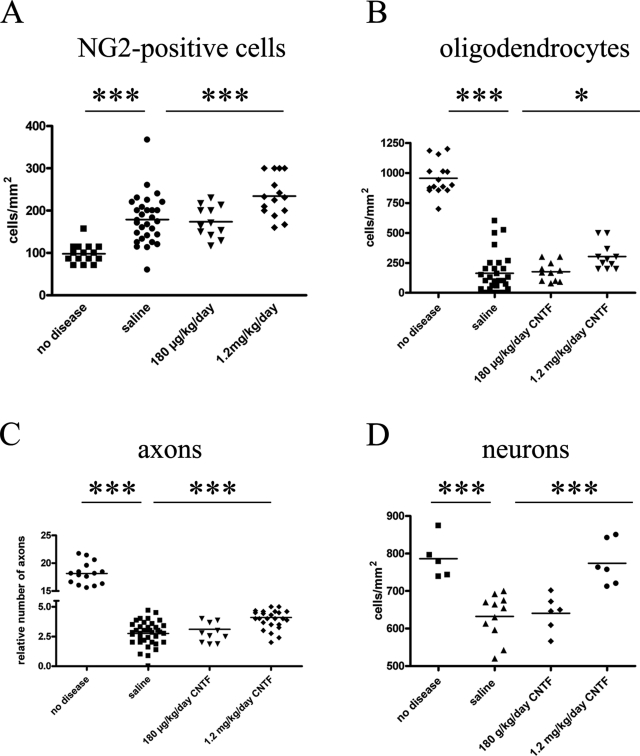Figure 4-6916.
CNTF increases the number of oligodendrocytes and their precursors and decreases axonal and neuronal damage. A–D: To analyze the effects of CNTF treatment in the chronic disease phase, spinal cord tissues from mice in the chronic disease phase [days 28 to 36 after immunization with MOG(35-55) peptide] were studied. The numbers of NG-2-positive cells, oligodendrocytes (PLP-ISH), axons (Bielschowsky’s staining), and neurons (NeuN) in healthy mice or mice treated either with different concentrations of CNTF or saline were determined. The animals from the two experiments shown in Figure 1, A and B, were pooled for this analysis; the saline-treated mice in these two experiments did not show significant differences in the clinical course or different histological parameters. A–C: In saline-treated EAE, the numbers of NG2-positive cells, PLP-positive oligodendrocytes, and axons within the lesions were significantly reduced compared to naive mice (P < 0.001 for all parameters). D: Also the number of NeuN-positive neurons in the ventral horn of the thoracic spinal cord of saline-injected mice with EAE was significantly lower compared to healthy animals without disease (P < 0.001). Treatment with 1.2 mg/kg/day CNTF led to significantly higher numbers of NG-2-positive cells (P = 0.0002) (A), PLP-positive oligodendrocytes (P = 0.012) (B), and axons (P < 0.0001) (C) within the lesions. D: Administration of 1.2 mg/kg/day CNTF prevented completely the reduction in NeuN-positive neurons observed in control EAE mice (P = 0.0006). Notice the different scale of the y axis in D. Each point in A–C represents the result of one spinal cord cross-section, in D each dot represents the result of one animal.

